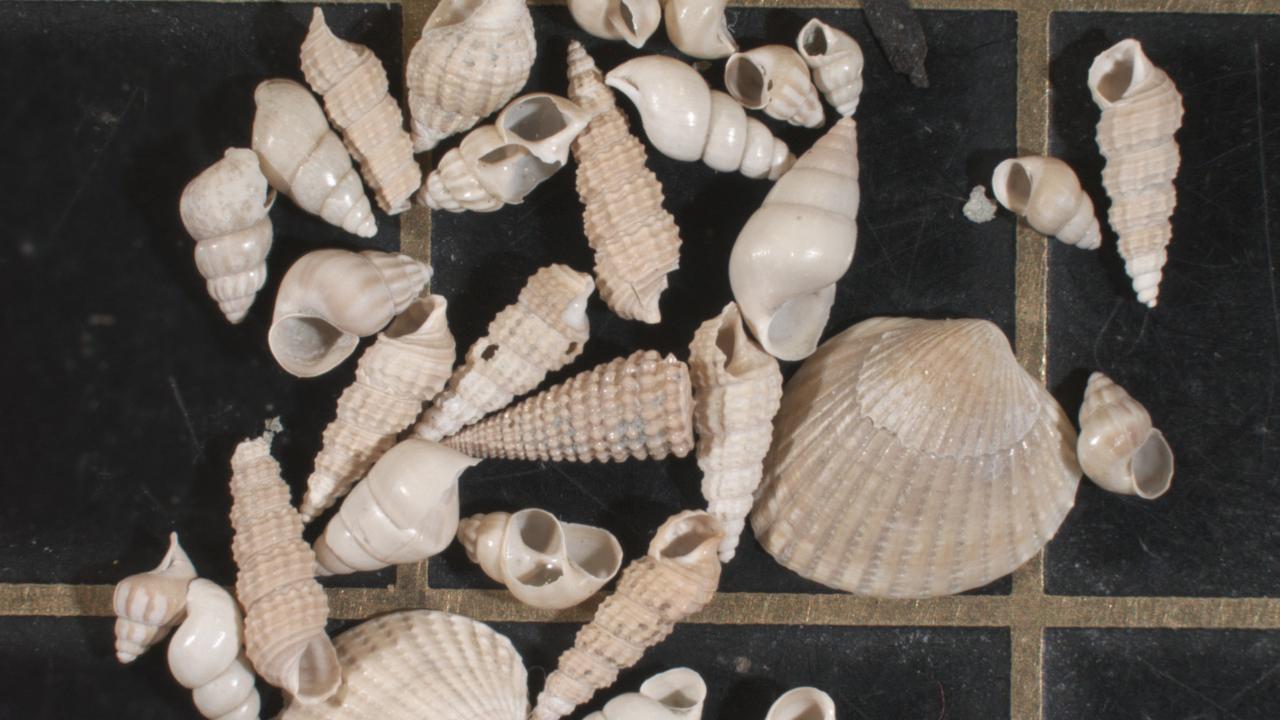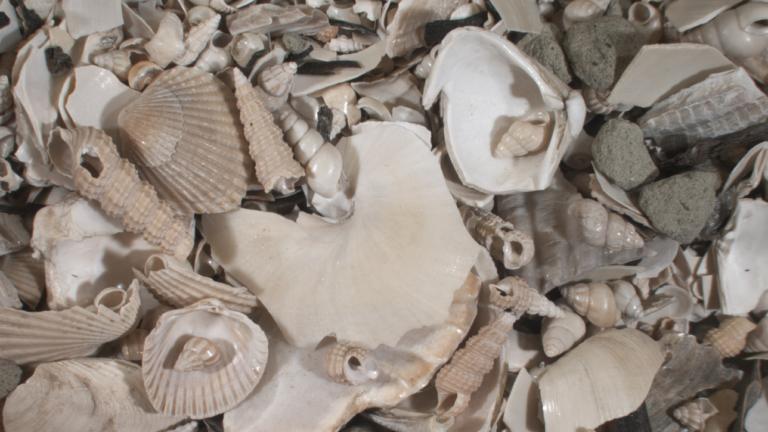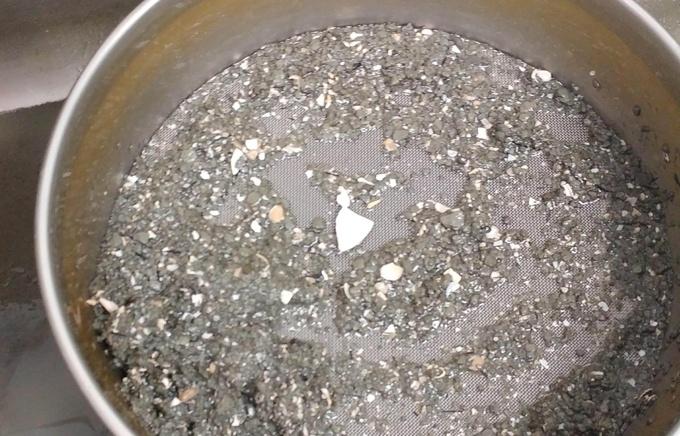
Becky is museum preparator. Many different tasks fall under this umbrella: cleaning whale bones, preparing study skins of birds and animals, and repairing broken geological samples, for example. However, of all the tasks I do, the most relaxing is washing fossil mollusc samples. This involves separating shells from mud and sand through a sieve. It is a meditative task involving swishing water around in a pan, and the fun part is you never know what will turn up. The buried treasure I am looking for is not gold, but beautiful shells!
Currently I am working on a series of hard balls of clay that were collected this past spring. The work is done in a series of steps. The clay balls are so solid that they have to be soaked in water for a few hours first. This causes the clay to break down and become soft mud, which is easier to process. Once it is soft, the mud gets put into a sieve with a mesh size of 0.5mm. I add a bit of mud to the sieve and put it under running water in a special sink designed to handle sand and mud going down the drain. The water goes through the sieve, taking the clay with it and leaving the fossil shells behind. But...it is not totally straightforward; the mud is filled with small pellets of clay not yet saturated by water so I have to do a bit of turning the sieve and using the water to move the clay bits around in the bottom to encourage them to break up. This washing quite relaxing! After this, there are still small bits of clay, but I have found that a second overnight in water soak softens them up so during the next day’s washing they disappear.
The fun part, of course, is seeing what turns up out of each muddy sample. To the naked eye it appears to be mostly shell fragments, through a closer look through a microscope reveals lots microscopic small gastropods. Once we found is what appears to be the end of a crab claw. My favorite are the tiny fossils of molluscs, usually itty bitty gastropods. They float in the top of the water in the sieve, and they look like white floating grains of sand. But if you look at them up close they are truly beautiful.
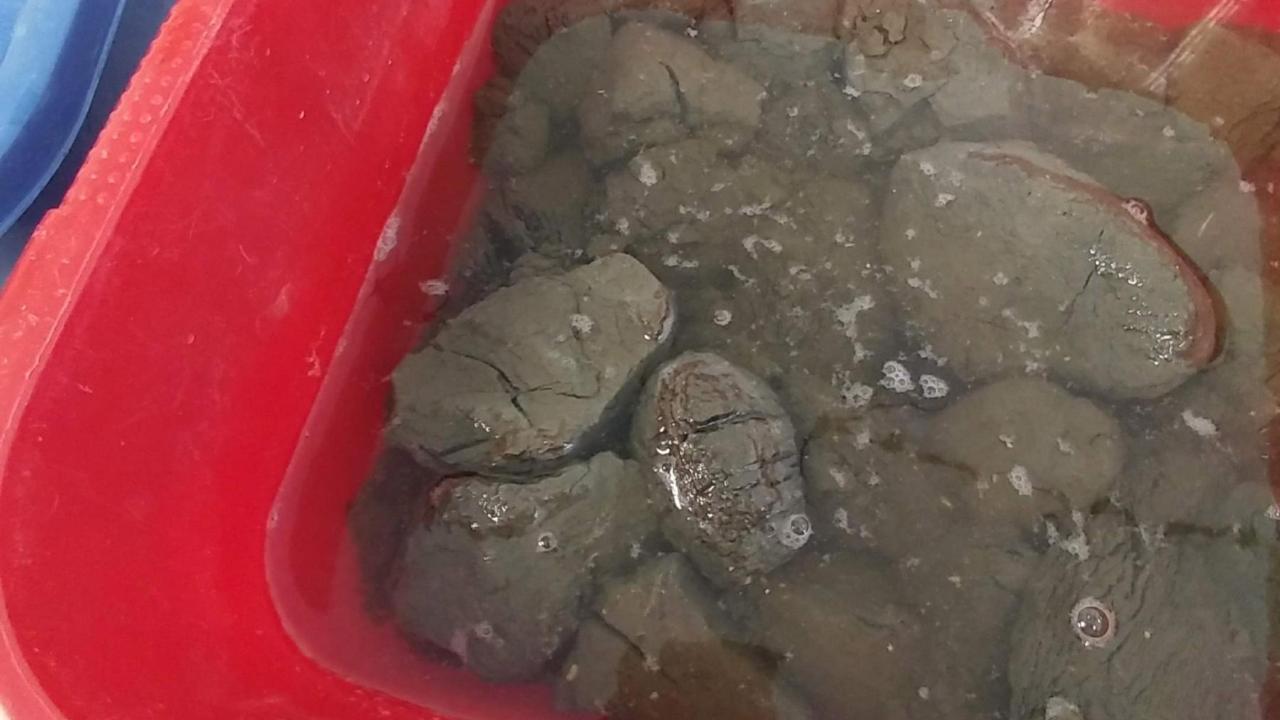
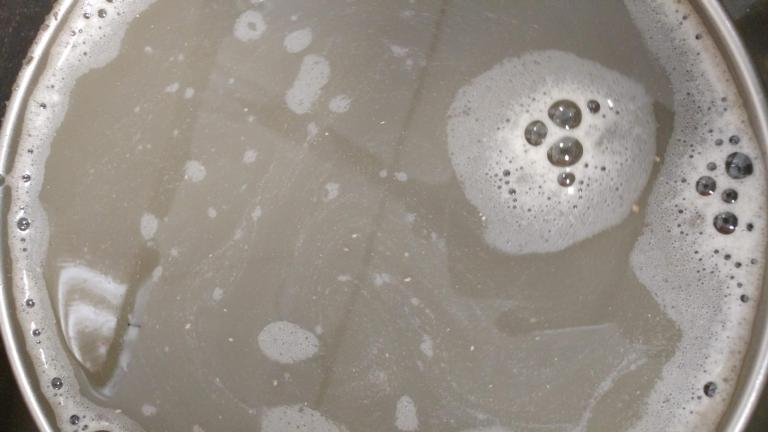
This particular batch of specimens came from Texel, the southernmost of the Wadden Sea islands. A Naturalis researcher and the collection manager of fossil mollusca went on an expedition and collected these dry clay balls from the beaches there. These balls appear after a beach has been renourished. They are dredged up from the bottom of the North Sea along with sand designated for an eroded beach. When the sand is pumped onto the beach the clay balls are too.
These fossil shells will go into the collection after washing, where they will be available for researchers to use. But first, more relaxing work of sieving and searching for fossil gold.
